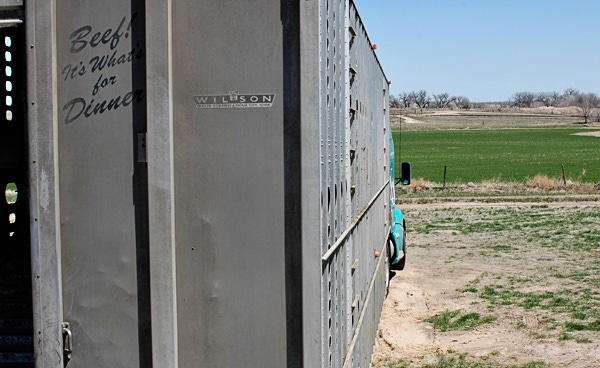January 7, 2015

Some in the beef industry have been wringing their hands about price discovery for live cattle since the late 1980s. Concerns arose then after a bout of packing industry consolidation, which led to concerns about so-called captive supply (packer feeding, etc.).
Packer ownership of live cattle is now pretty much a dead issue. The real issue is the diminishing cash market, especially on the Southern Plains. I’m told that packer buyers last year met several times with cattle feeders in Kansas and Texas to discuss the issue. Cattle feeders apparently said they don’t want to sell on the cash market but, at the same time, are worried about its disappearance. This seems rather contradictory.
Cattle feeders also said they don’t know how to arrest the decline in cash sales. Perhaps they’re missing the real point. Instead of trying to stop the decline, why not explore the development of what I call a live cattle value index?

BEEF Seedstock 100
Looking for a new seedstock provider? Use our BEEF Seedstock 100 listing to find the largest bull sellers in the U.S. Browse the Seedstock 100 list here.
The cash trade of live cattle (negotiated cash and grid sales) has declined each year since at least 2005. In that year, cash accounted for 52.1% of all sales, according to USDA’s Agricultural Marketing Service. In the interests of accuracy, it should be noted that AMS data involves only cattle sold to plants processing 125,000 head or more each year. Negotiated grid sales that year accounted for 9.9% of sales. Formula sales accounted for 33.2%, and forward-contract sales accounted for 4.8%.
Fast-forward to 2013 and the percentages were: cash, 23.1%; negotiated grid, 6.3%; formula, 59.8%; and forward contract, 10.8%. So total cash sales were 29.4%, and others were 70.6%. The percentages last year through October were: cash, 23.7%; negotiated grid, 4.5%; formula, 57.4%; and forward contract, 14.4%. So total cash sales were 28.2%, and others were 71.8%.
More telling was that cash sales in Texas, Oklahoma and New Mexico in the nine months last year were 3.3%, with 5.8% in grid sales. This was down from 6.1% and 6.9%, respectively, in all of 2013. Kansas also saw a sharp decline, with cash sales at 16.3% and grid sales at 0.7%, vs. 21.0% and 4.05%, respectively, in 2013.
In contrast, Nebraska in the same nine months had 40% cash sales and 4.4% grid sales, vs. 36.4% and 5.0%, respectively, in all of 2013. Iowa and southern Minnesota had 58.5% cash sale and 5.9% grid sales in the nine months, vs. 54.6% and 8.4%, respectively, in 2013.
Subscribe now to Cow-Calf Weekly to get the latest industry research and information in your inbox every Friday!
Cattle feeders up north thus continue to support the cash market, while their brethren down south allow it to continue to erode. This means the live cattle market has become much more of a national market because cattle feeders in Texas, Kansas and Colorado are increasingly using other markets to price their cattle. There is no price discovery left in Texas, so its market mirrors what is going on elsewhere, says Stephen Koontz, Colorado State University ag economist.
Koontz is completing a study about the thinning cash market and whether cattle feeders believe anything should be done about it. He’s recommended that the industry look at compensating cattle feeders who support the cash market. Another is to require all cattle feeders to sell a certain percentage of their cattle on the cash market. I’m not sure such moves are feasible or desirable.
Here is my suggestion. The best minds in the industry should develop a live cattle value index (LCVI) that includes the following:
USDA’s five-area steer and heifer weekly cash price averages
Average weekly close of the nearby live cattle futures contract
USDA’s weekly blended Choice-Select cutout
USDA’s weekly average byproduct value
Start the LCVI at 100 and see how it tracks each week for a year against cash prices.
The disappearing cash market is such a serious issue that I urge the industry to consider such a move.
Steve Kay is editor and publisher of Cattle Buyers Weekly (cattlebuyersweekly.com). See his weekly cattle market roundup each Friday afternoon at beefmagazine.com.
You might also like:
The cattle market found its bottom; where to from here?
4 ways to raise better beef in 2015
15 photos of cowboy hats in action
8 tips for being a better ranch manager in 2015
Top 20 beef industry events of 2014
How will declining fuel prices affect beef demand?
100 biggest seedstock producers in the U.S.
No ranchers under age 35 by 2033? Say it ain't so
About the Author(s)
You May Also Like





